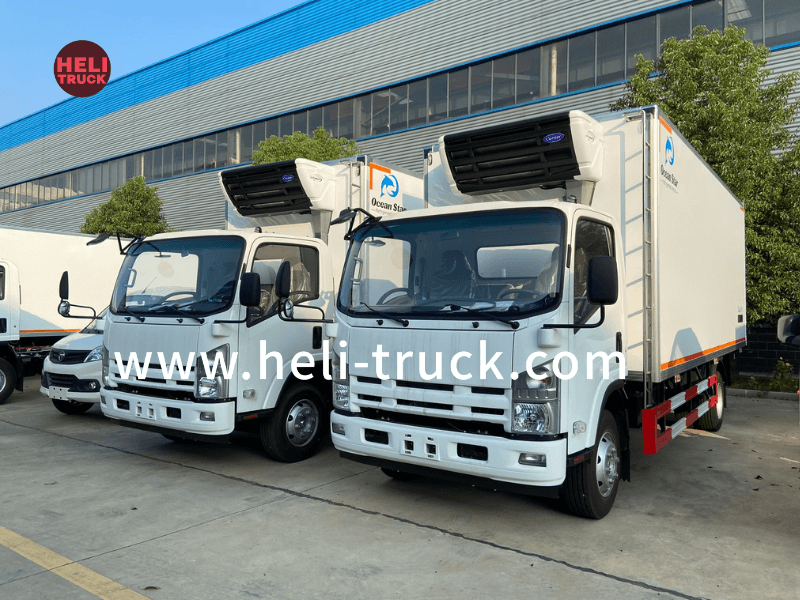Introduction
Vacuum trucks are versatile vehicles used for a variety of purposes, including waste removal, sewer cleaning, and hazardous material transportation. While these trucks play a crucial role in maintaining public health and safety, they also have the potential to impact the environment in various ways. This article aims to explore the environmental impact of vacuum trucks, discussing their emissions, energy consumption, waste management practices, and potential for pollution. By examining these factors, we can better understand how vacuum trucks contribute to environmental sustainability and identify areas for improvement.
Emissions
One of the primary environmental concerns associated with vacuum trucks is their emissions. Like any other vehicle powered by internal combustion engines, vacuum trucks release pollutants into the atmosphere during operation. These emissions can include nitrogen oxides (NOx), particulate matter (PM), volatile organic compounds (VOCs), and carbon monoxide (CO), all of which have detrimental effects on air quality and public health.

To mitigate the environmental impact of emissions from vacuum trucks, manufacturers have implemented various technologies to reduce pollution. For example, many modern vacuum trucks are equipped with diesel particulate filters (DPF) and selective catalytic reduction (SCR) systems to minimize the release of harmful pollutants. Additionally, some operators have switched to alternative fuels such as biodiesel or compressed natural gas (CNG) to lower their carbon footprint and decrease emissions.
Energy Consumption
In addition to emissions, the energy consumption of vacuum trucks is another important consideration when assessing their environmental impact. These vehicles require significant amounts of energy to power their vacuum pumps, hydraulic systems, and other components essential for their operation. As a result, vacuum trucks can contribute to greenhouse gas emissions and resource depletion if powered by fossil fuels.
To address the energy consumption of vacuum trucks, operators can take steps to increase fuel efficiency and reduce their reliance on non-renewable energy sources. This can be achieved through regular maintenance to ensure optimal performance, driver training to promote eco-driving practices, and the adoption of alternative propulsion technologies such as electric or hybrid systems. By improving energy efficiency, vacuum trucks can minimize their environmental impact and contribute to a more sustainable future.
Waste Management Practices
Another aspect of the environmental impact of vacuum trucks is their role in waste management. These vehicles are commonly used for collecting and transporting various types of waste, including sewage, sludge, industrial byproducts, and hazardous materials. Improper handling of these wastes can lead to contamination of soil, water sources, and ecosystems, posing significant risks to human health and the environment.
To mitigate the environmental impact of waste management practices associated with vacuum trucks, operators must adhere to strict regulations and guidelines governing the handling, storage, and disposal of waste materials. This includes proper containment of hazardous substances, secure transportation to authorized facilities, and appropriate treatment methods to minimize the release of pollutants. By following best practices in waste management, vacuum truck operators can reduce the environmental risks associated with their operations and protect ecosystems from harm.
Pollution Potential
One of the most significant environmental concerns related to vacuum trucks is their potential for pollution. These vehicles are often used in sensitive areas such as residential neighborhoods, industrial sites, and water treatment facilities, where spills or leaks can have severe consequences for the environment. Accidental releases of waste materials from vacuum trucks can contaminate soil, water bodies, and air, leading to ecosystem damage and human health hazards.
To prevent pollution incidents, operators must prioritize safety measures and implement spill prevention and response protocols. https://www.heli-truck.com includes regular equipment inspections, emergency training for personnel, and the use of containment measures such as spill kits and secondary containment systems. By proactively addressing the pollution potential of vacuum trucks, operators can minimize the environmental impact of their operations and protect the surrounding environment from harm.
Conclusion
In conclusion, vacuum trucks play a vital role in waste management, sewer cleaning, and hazardous material transportation, but they also have the potential to impact the environment in various ways. By understanding the environmental implications of these vehicles, we can take steps to minimize their emissions, energy consumption, waste management practices, and pollution potential. Through the adoption of sustainable technologies, best practices, and regulatory compliance, vacuum truck operators can reduce their environmental footprint and contribute to a cleaner, healthier planet for future generations.
